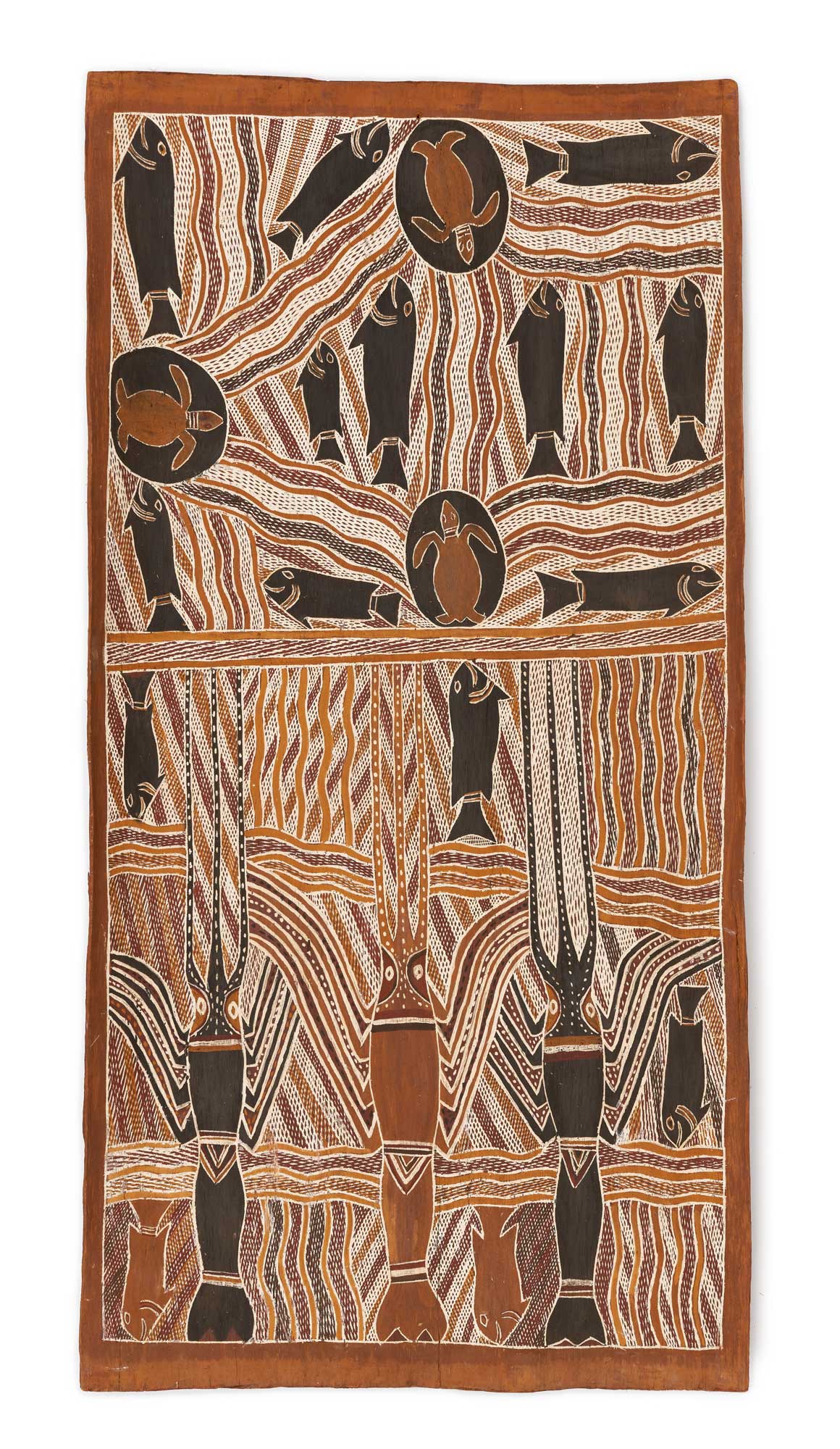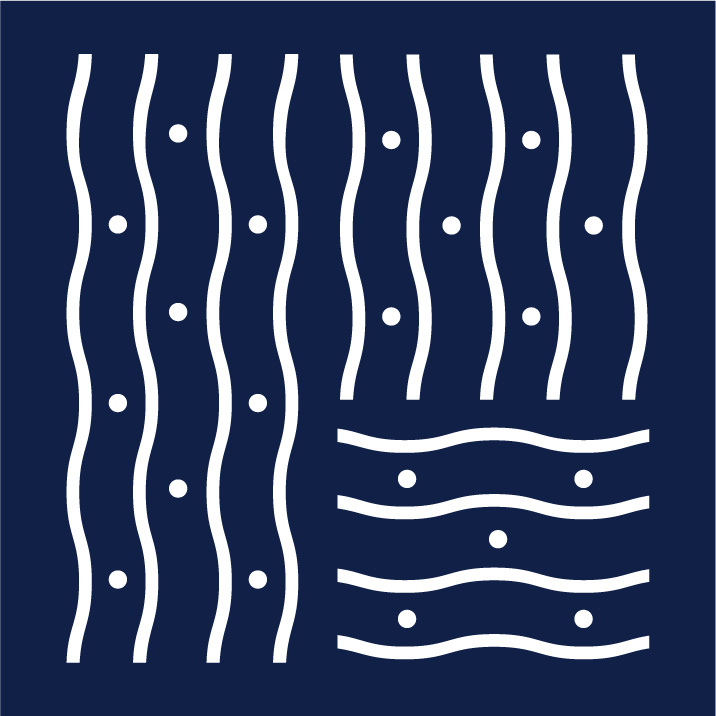
"My father and my fathers’ fathers from way back had Munyuku mothers, too. Mäw’ Munuŋgurr’s and Muwaŋ Munuŋgurr’s mothers were Munyuku. Who knows how many of my father’s fathers. They had Munyuku mothers from way back. And their words have followed me for a long time, following me into the future, out of the past. And I hold the designs for the Munyuku and also the Lamamirri, my mother’s clans. The two designs for the ocean over there and the point Yarrinya. These two stories are connected; their stories and songs are significant. I am a caretaker for those places. I hold those designs, those paintings, those painted designs: miny’tji, dhulaŋ, gamunuŋgu. That is the Law. "
– BARAYUWA MUNUŊGURR
Additional Information
Decade
before 1966
Medium
Natural pigments on eucalyptus bark
Dimensions (IN)
45 3/4 x 23 1/4
Dimensions (CM)
116.2 x 59.1
Credit
Kluge-Ruhe Aboriginal Art Collection of the University of Virginia. Edward L. Ruhe Collection, Gift of John W. Kluge, 1997. 1993.0004.181
Narrative
Munyuku
The Munyuku clan belongs to the Yirritja moiety. Major spiritual themes relate to marine life...
Location
1960s
The 1960s were a decade of tumult and triumph for Yolŋu art and artists. In...
About The Artist(s)

Clan
Gupa-Djapu’
Artist Dates
c.1910-1976
Alternative Names
Mau, Maw
Mäw’ Munuŋgurr
Mäw’ Mununŋur was the son of Woŋgu. He was imprisoned in Fannie Bay Gaol in Darwin following a skirmish at Caledon Bay in 1933 in which the crew of a Japanese pearling boat were killed. During World War II he was a member of Donald Thomson’s Northern Territory Special Reconnaissance Unit, patrolling the shores of Arnhem Land for signs of Japanese invasion. Mäw’ was among the first artists to produce bark paintings for Rev. Wilbur Chaseling at the newly established Yirrkala Mission, and continued painting until his death including works for Ronald and Catherine Berndt in 1946 and 1947, and for Charles Mountford’s American–Australian Scientific Expedition to Arnhem Land in 1948. Beyond his paintings, Mäw’ was renowned as a singer, dancer and ceremonial leader and the 1970s, worked to establish Waṉḏawuy as a permanent homelands for the Djapu’ clan.
Collections Represented
Art Gallery of New South Wales
Bank Art Museum Moree
Berndt Museum of Anthropology, University of Western Australia
Kluge-Ruhe Aboriginal Art Collection of the University of Virginia
